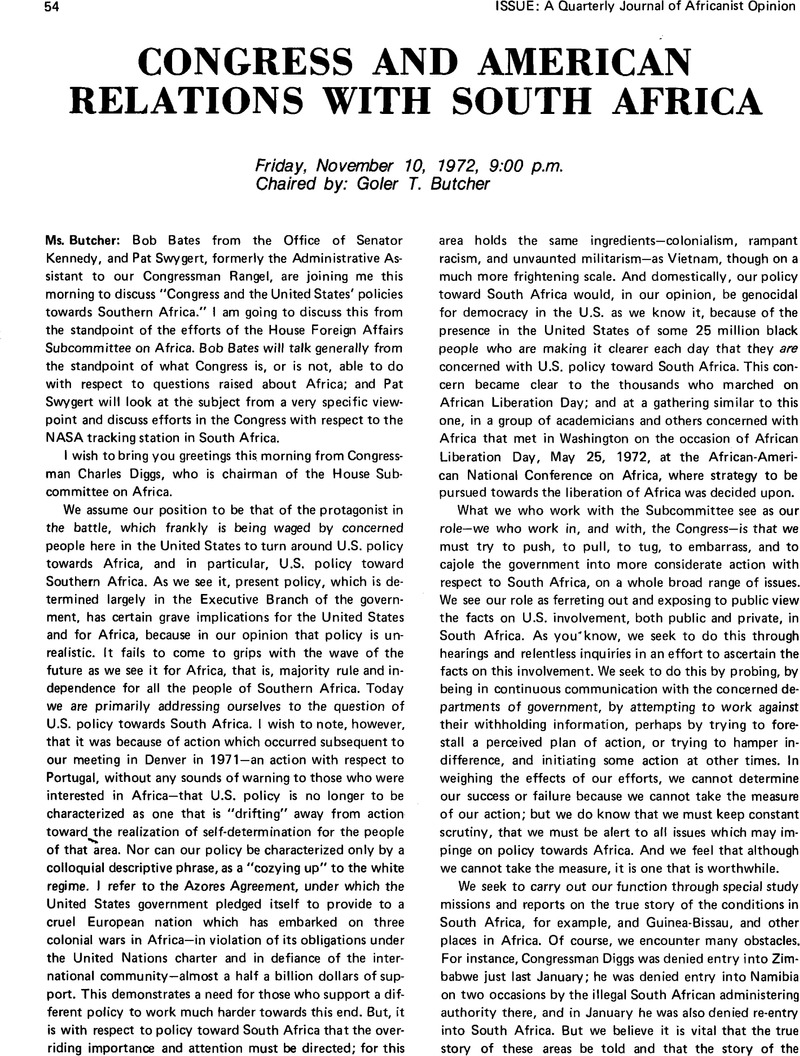No CrossRef data available.
Published online by Cambridge University Press: 23 May 2019

page 55 note * H.J. Res. 269.
† Hearings are currently in progress.
page 56 note * In the Senate, the bill to repeal the Byrd amendment, S. 1868 (which technically would nullify the application of the Byrd amendment to the United Nations Participation Act) passed the Senate on December 18, 1973, by a vote of 54 to 37. (The vote on cloture was 63 to 26.) The significance of this vote is indicated by the fact that it followed filibuster and cloture; since World War I, cloture has been successfully invoked in only 14 out of 79 tries.
The scene now shifts to the House, where the bill is pending before the House Committee on Foreign Affairs. The bill was voted favorably out of the House Subcommittee on International Organizations and Movements on October 17, 1973. It is expected that the full committee will report the bill favorably and thus it will come before the full House sometime in March or April. —G.B.
page 60 note * On July 10, 1973, Dr. James C. Fletcher, Administrator of NASA, announced a “phasedown of facilities located at the tracking station near Johannesburg,South Africa, beginning in mid-1974,” to be concluded in late 1975. NASA explained that the Deep Space Network fSteility will be replaced by the larger antenna facilities located in Goldstone, California, and new large-dish facilities in Canberra, Australia, and Madrid, Spain. However, the decision to phasedown the Earth-orbiting satellite tracking facility in late 1975 is tentative, the final decision being dependent upon a “finer definition and study of satellite technical requirements.” NASA Release Number 73-128 (July 10, 1973). The import of Dr. Fletcher's announcement is twofold: first, it appears to be certain that the Deep Space Network facility will be closed, and second, we have an admission from NASA that the Earth-orbiting satellite tracking facility is not absolutely essential to our space program. Now is the time to ask our Congressmen to consider whether NASA's phasedown schedule can be accelerated. (N.B. The Science and Astronautic Committee hearings on NASA's satellite facilities were scheduled for October 23 and 24, 1973.)